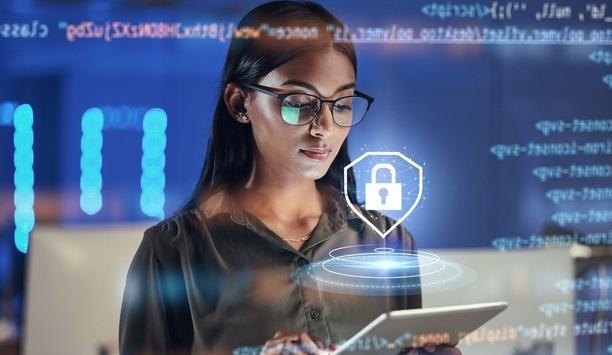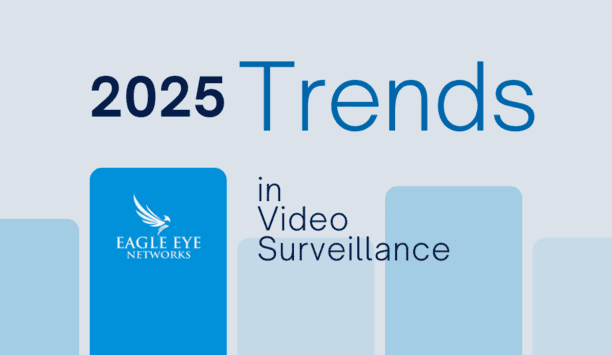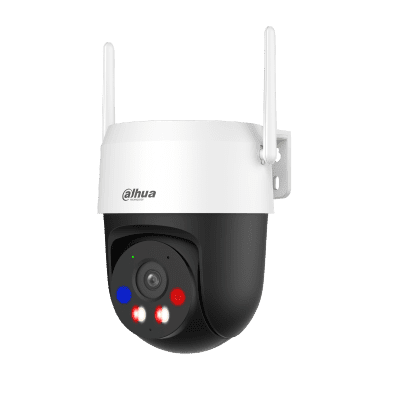What new technologies and trends will shape video analytics?
Editor Introduction
The topic of video analytics has been talked and written about for decades, and yet is still one of the cutting-edge themes in the physical security industry. Some say yesterday’s analytics systems tended to overpromise and underdeliver, and there are still some skeptics. However, newer technologies such as artificial intelligence (AI) are reinvigorating the sector and enabling it to finally live up to its promise. We asked this week’s Expert Panel Roundtable: What new technologies and trends will shape video analytics in 2021?
Cloud computing is a widely discussed topic in the enterprise security IT space, but its counterpart – edge computing – is an arguably more useful and impactful network infrastructure that is transforming the way analytics and data are handled, processed, and delivered from millions of devices around the world. Edge computing places computing resources closer to the user or the device, at the ‘edge’ of the network, rather than in a hyperscale cloud data centre many miles away from the ‘core’ of the network. Processing data at the edge lowers bandwidth consumption and reduces latency, allowing end users to make faster decisions in critical situations. In video surveillance, edge computing allows data to be processed in the camera itself. And thanks to advances in technology, IP cameras increasingly have the processing power to run AI- or deep learning-based analytics and algorithms in real-time.
In terms of technologies, Artificial Intelligence (AI), Machine Learning (ML) and cloud technologies will continue to have a massive impact on the future of video analytics. Cloud technology and platforms are allowing for more advanced analytics applications, while increased computing capabilities on edge devices, specifically cameras, have really shaped the analytics environment. Cameras and other devices on the edge are becoming more powerful, which is leading to a boost in the variety of addressed use cases and the adoption of analytics in the industry. Going beyond security only, the trends within safety applications are involving crowd management, social distancing, face mask detection, etc., took the stage in 2020, but they also paved the way for more mainstream use cases to be realised. The technology, while not novel to the security industry, has the opportunity to reach more vertical markets than ever, solving more practical use cases by offering vital business intelligence.
I don’t think you can talk about analytics without discussing AI. Rapid advances in this technology are enabling deeper and more specific analysis of the video, which is helping to address more targeted and unique use cases for analytics. For example, analytics can not only identify an object as a person, but also by additional subclassifications — customer demographics in a retail setting; traffic cameras that can detect the wearing of seatbelts or eyeglasses based on the requirements on a driver’s licence; if a person is carrying a bag or backpack. The ability for more detailed analysis is enabling vendors and systems integrators to create more customised solutions that address unique customer needs.
Innovations in video analytics are being driven by the growing demand for real-time automation. To meet these demands, video analytics need to be immediately responsive, which often requires running in real-time on local hardware. Many hardware manufacturers are moving toward lower cost, specialised hardware dedicated to running neural networks. In parallel, the computer vision industry is moving toward faster, lighter-weight neural networks that are exceptionally accurate. For example, our new Touchless Video Doorbell uses highly accurate, real-time video analytics to ring your doorbell immediately after a person is detected. This year, further advancements to the technology will give other surveillance options similar speed and accuracy to our doorbell.
The most exciting tech for 2021 is the new class of AI cameras that are available. As companies work to bring buildings back to capacity, security and operations departments are re-evaluating how to work smarter, not harder, with available resources. By running AI-based analytics on the edge, users can take advantage of tremendous computational power without significant investments in servers, expensive workstations and infrastructure. With AI-based object detection, classification and attribute extraction, false positives are all but eliminated. AI cameras can tell us when a person is at the back door, while ignoring vehicle traffic in the same field of view. This enables us to reimagine what is possible with a comprehensive IoT sensor that goes beyond traditional security to provide operational and business intelligence as well.
2021 will be the year that marketing, merchandising and operations departments realise how security cameras, now omnipresent and widely accepted in society, can provide them with a wealth of business intelligence that informs and validates their decisions. Far beyond traditional security and motion detection, these organisations will have new AI-based tools that reliably detect people and their movements. By enabling highly accurate analysis of shopper behaviour, product interaction, staffing needs and inventory levels, cameras are being transformed into true IoT sensors that can be leveraged by multiple departments. Video analytics solutions will need to have hardened design philosophies to protect against ever-present cyber threats and stringent privacy filters for mass adoption in the United States. Artificial Intelligence and the anonymising of data gathered will play a crucial role as these robust video analytics tools become more widely available and accepted in 2021.
Video analytics will continue to evolve at a pace during 2021 and be shaped, as discussed in previous round tables, by the desire to provide increased business intelligence to empower our customers to work more efficiently, effectively and safely. Video analytics takes video surveillance beyond its original conception as a security only solution into a far broader business management technology where video translated into data positively impacts informed decision-making in marketing, operations, safety and security, to name only a few areas. Critical to this is the ability to be able to unify voice, data, video and analytics into one integrated platform, which enables people, businesses and whole communities to function in even more powerful ways.
Artificial Intelligence (AI) and video analytics continue to move to the edge, giving system integrators more technology options on which to build end-to-end solutions. Integrators can now begin to choose from a range of local processing options — including high-powered dedicated AI appliances connected to multiple video streams, as well as more economical surveillance cameras with the ability to dynamically load apps with the latest AI capabilities. As the gradual return to normalcy after COVID-19 becomes more realised, businesses will leverage and expand existing investments in systems. For example, sports stadiums and music venues need to limit the number of total guests and density in specified areas. The number of use cases needed to solve this problem that can be driven by security cameras is growing and include simple line-crossing alarms, heat-mapping, traffic flow, and foot traffic analysis.
Technology that will enable society to return to some sense of normality will be crucial – facemask detection and social distancing technology, for example, will allow high streets and cities to start operating again. Beyond the pandemic, privacy concerns remain a hot topic, and technologies that offer prevention or protection from cybercrime will be in high demand as we encounter smartphone threats, data breaches, and cloud application vulnerabilities. And, as a result of 5G increasing bandwidth, the IoT era will truly come into its own. Lastly, distributed cloud – the next generation of cloud computing – will extend the range and use cases for the cloud. In 2020, society was dependent on advanced video technology as an integral part of the relaxation of lockdown restrictions. Its role in 2021 is to build on that, instilling confidence in a society that people can return to life outside lockdown and remain safe and healthy.
The pandemic accelerated the development of video analytics such as people counting, and tools that help better understand the movement of people in public places, stores, public transport, etc. The trend is moving towards the wider use of analytics data in non-traditional security applications to drive business value. With the latest innovations in AI, and especially in deep learning, we are also expecting to see a move towards delivering enterprise-level analytics at scale so that these solutions can be applied to thousands of cameras, across distributed locations while at the same time reducing the hardware footprint. And finally, privacy will prove to be a catalyst for innovation to meet the regulatory requirements for personal and data protection across all sectors of the industry. I think our fundamental need for privacy will encourage the continued development of analytics that help protect the privacy of citizens without compromising security.
We see edge devices such as cameras becoming more powerful and capable of analysing data in real-time. The combination of powerful edge device computational power, local storage, and cloud connectivity has created major opportunities to detect suspicious events and potentially prevent intrusions before they happen. For analytics needing higher processing power than at the edge, the use of appliances that connect camera streams and analytics to the cloud will become increasingly important. Camera streams may need to be processed for more than one analytic and fast processing and cloud connectivity is key. The use of analytics instances in the cloud will continue to evolve and Central Stations will improve alarm verification and response. Detection of intrusion events with smarter and more connected devices becomes powerful only when professional or end customer Central Stations are in a position to react quickly and accurately to potential threats.
A 2019 Wall Street Journal article estimated there were more than 770 million video cameras installed worldwide with an expectation of one billion devices by the end of 2021. It’s mind-boggling to think of how much video these cameras generate. How can users analyze it all? Artificial intelligence-based software offers a solution for the monitoring business. False alarms, often topping 95% of alerts, are events caused by harmless activities such as blowing foliage. AI helps independent or enterprise monitoring center operators determine what’s a threat and what can be ignored. Cloud-based AI platforms, trained with deep learning techniques, review video alarms and reject those not caused by humans or vehicles. The result is 95% or more of false alarms are rejected. Monitoring operators may spend more time on genuine alarms. Analysing the massive quantities of video collected by 1 billion cameras requires artificial intelligence technologies.
Editor Summary
More intelligence at the edge – i.e., inside the camera – is improving the performance of older video analytics applications and enabling new ones. Artificial intelligence and machine learning are achieving new levels of functionality and accuracy in these systems. Video analytics technology is also defining new use cases, both in the context of the COVID-19 pandemic and in the broader corporate environment beyond security. 2021 may be remembered as the year that video analytics finally came of age.
- Related links
- Axis Communications CCTV software
- Genetec CCTV software
- IndigoVision CCTV software
- Milestone CCTV software
- Axis Communications IP cameras
- Genetec IP cameras
- IndigoVision IP cameras
- ANPR Software CCTV software
- Control Software CCTV software
- Megapixel IP cameras
- Network IP cameras
- PTZ IP cameras
- Thermal IP cameras
- IP Surveillance Software CCTV software
- Management Software CCTV software
- Monitoring Software CCTV software
- Surveillance Software CCTV software
- Transmission Software CCTV software
- Related categories
- CCTV software
- IP cameras
Expert commentary
A modern guide to data loss prevention
Download7 proven solutions for law enforcement key control and asset management
DownloadSecurity practices for hotels
Download2025 Trends in video surveillance
DownloadMaximising security and performance
DownloadDahua P3AS-PV 3MP Outdoor Wi-Fi PTZ Camera with Active Defense
Climax Mobile Lite: Advanced Personal Emergency Response System (PERS)
Hanwha Vision 4CH AI Multi-sensor Camera with WAVE VMS



























